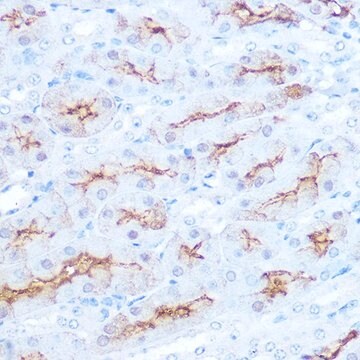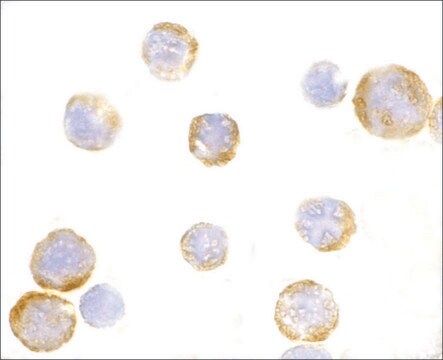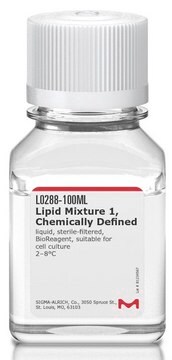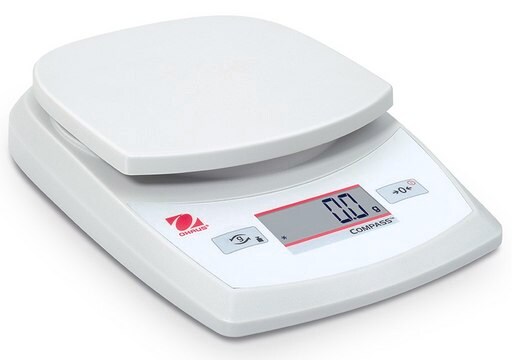일반 설명
We are committed to bringing you greener alternative products, which adhere to one or more of The 12 Principles of Green Chemistry.This antibody is Preservative-free, produced without the harm or sacrifice of animals and exceptionally stable to allow for ambient shipping and storage if needed and thus aligns with "Waste Prevention", "Designing Safer Chemicals" and "Design for Energy Efficiency".
Click here for more information.
ZooMAb® antibodies represent an entirely new generation of recombinant monoclonal antibodies. Each ZooMAb® antibody is manufactured using our proprietary recombinant expression system, purified to homogeneity, and precisely dispensed to produce robust and highly reproducible lot-to-lot consistency. Only top-performing clones are released for use by researchers. Each antibody is validated for high specificity and affinity across multiple applications, including its most commonly used application. ZooMAb® antibodies are reliably available and ready to ship when you need them.
특이성
Clone 3N22-1 is a ZooMAb® Rabbit recombinant monoclonal antibody that specifically detects CD138/Syndecan-1. It targets an epitope within 14 amino acids from the C-terminal region.
면역원
KLH-conjugated linear peptide corresponding to 14 amino acids from the C-terminal region of human CD138/Syndecan-1.
애플리케이션
Quality Control Testing
Evaluated by Western Blotting in RAW264.7 cell lysate.
Western Blotting Analysis: A 1:1,000 dilution of this antibody detected CD138/Syndecan-1 in RAW264.7 cell lysate.
Tested Applications
Western Blotting Analysis: A 1:1,000 dilution from a representative lot detected CD138/Syndecan-1 in MCF-7 and EL4 cell lysates.
Flow Cytometry Analysis: 1 µg from a representative lot detected CD138/Syndecan-1 in one million Human peripheral blood mononuclear cells (PBMC).
Affinity Binding Assay: A representative lot of this antibody bound CD138/Syndecan-1peptide with a KD of 1.0 x 10-8 in an affinity binding assay.
Immunocytochemistry Analysis: A 1:100 dilution from a representative lot detected CD138/Syndecan-1 in A431 cells.
Immunohistochemistry (Paraffin) Analysis: A 1:100 dilution from a representative lot detected CD138/Syndecan-1 in Human colon plus human CD138/Syndecan-1 control tissue sections.
Note: Actual optimal working dilutions must be determined by end user as specimens, and experimental conditions may vary with the end user.
표적 설명
Syndecan-1 (UniProt: P18827; also known as SYND1, CD138) is encoded by the SDC1 (also known as SDC) gene (Gene ID: 6382) in human. Syndecans are transmembrane proteoglycans (PGs) composed of a core protein to which growth factor binding glycosaminoglycan (GAG) side chains are attached. Four members of the Syndecan family have been studied and they include syndecan-1 that is mainly expressed in epithelial cells, syndecan-2 (fibroglycan, SDC2) is present on cells of mesenchymal origin, syndecan-3 (N-syndecan, SDC3) is found in neural tissue and cartilage, and syndecan-4 (amphiglycan, ryudocan, SDC4) is ubiquitously expressed. Syndecans are usually present on the cell surface, but they can also be released by the action of sheddases or accumulate in the cell nucleus and may also be present in body fluids. Syndecan-1/CD138 is a single-pass type I membrane protein that is produced with a signal peptide (aa 1-22), which is subsequently cleaved off to generate the mature form that contains an extracellular domain (aa 23-254), a transmembrane domain (aa 255-275), and a cytoplasmic domain (aa 276-310). It is a cell surface proteoglycan that bears both heparan sulfate and chondroitin sulfate and that links the cytoskeleton to the interstitial matrix. It plays a role in cell adhesion, motility, invasion, and intracellular signaling. Syndecan-1 is reported to perform these diverse functions by acting as a co-receptor for a variety of growth factor receptors or as a binding partner to integrins. Its shedding from cell surface is regulated by various matrix metalloproteinases (MMPs), including MMP-7, MMP-9, membrane-bound metalloproteinases (MT-MMP1), and by ADAM10 and ADAM17. This ZooMAb® recombinant monoclonal antibody, generated by our propriety technology, offers significantly enhanced specificity, affinity, reproducibility, and stability over conventional monoclonals. (Ref.: Szatmari, T., and Dobra, K. (2013). Front. Oncol. 3: 310; Ramani, VC., et al. (2012). J. Biol. Chem. 287(13); 9952-9961).
물리적 형태
Purified recombinant rabbit monoclonal antibody IgG, lyophilized in PBS, 5% Trehalose, normal appearance a coarse or translucent resin. The PBS/trehalose components in the ZooMAb formulation can have the appearance of a semi-solid (bead like gel) after lyophilization. This is a normal phenomenon. Please follow the recommended reconstitution procedure in the data sheet to dissolve the semi-solid, bead-like, gel-appearing material. The resulting antibody solution is completely stable and functional as proven by full functional testing. Contains no biocide or preservatives, such as azide, or any animal by-products. Larger pack sizes provided as multiples of 25 µL.
저장 및 안정성
Recommend storage of lyophilized product at 2-8°C; Before reconstitution, micro-centrifuge vials briefly to spin down material to bottom of the vial; Reconstitute each vial by adding 25 µL of filtered lab grade water or PBS; Reconstituted antibodies can be stored at 2-8°C, or -20°C for long term storage. Avoid repeated freeze-thaws.
법적 정보
ZooMAb is a registered trademark of Merck KGaA, Darmstadt, Germany
면책조항
Unless otherwise stated in our catalog or other company documentation accompanying the product(s), our products are intended for research use only and are not to be used for any other purpose, which includes but is not limited to, unauthorized commercial uses, in vitro diagnostic uses, ex vivo or in vivo therapeutic uses or any type of consumption or application to humans or animals.










